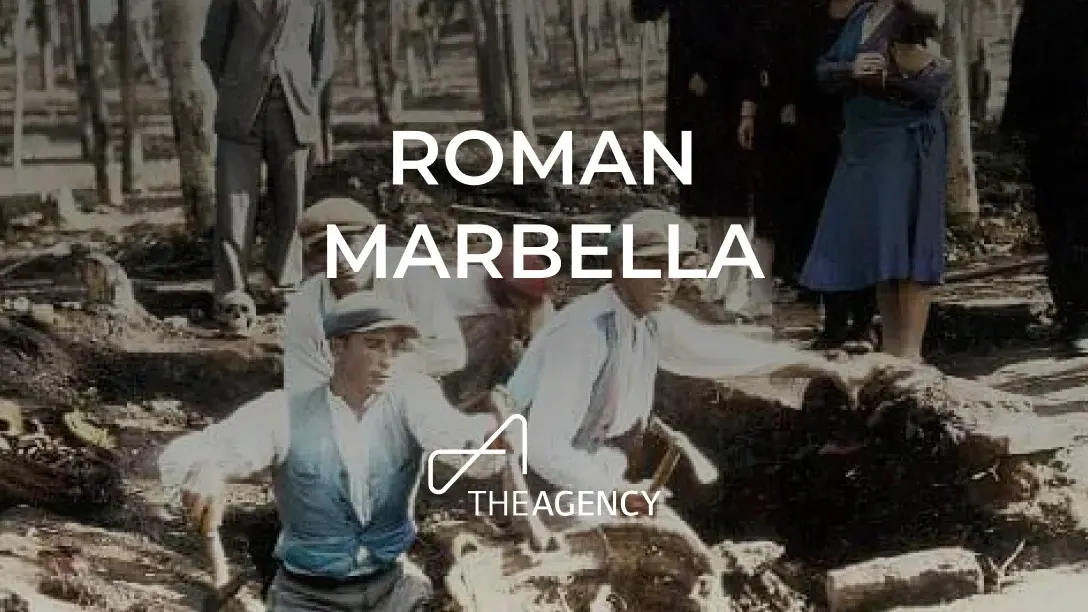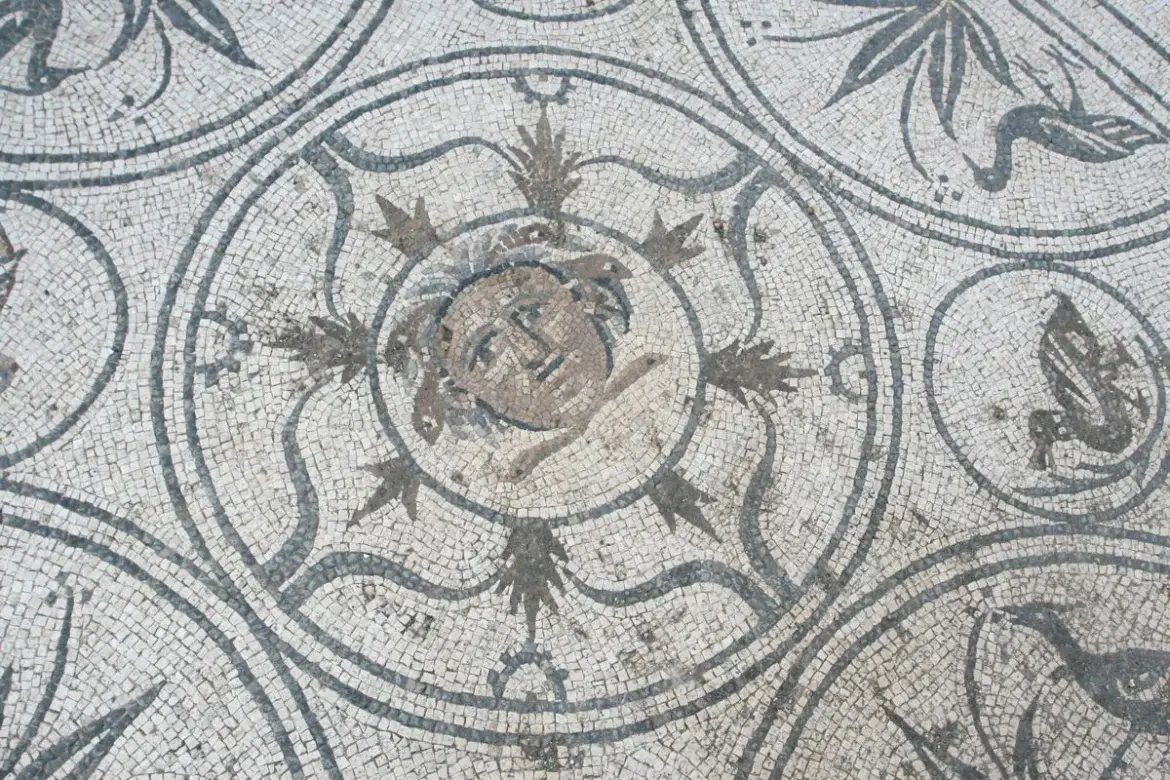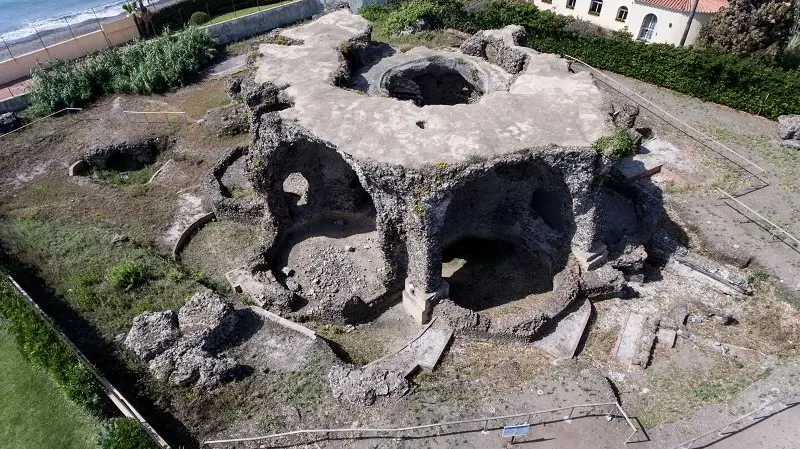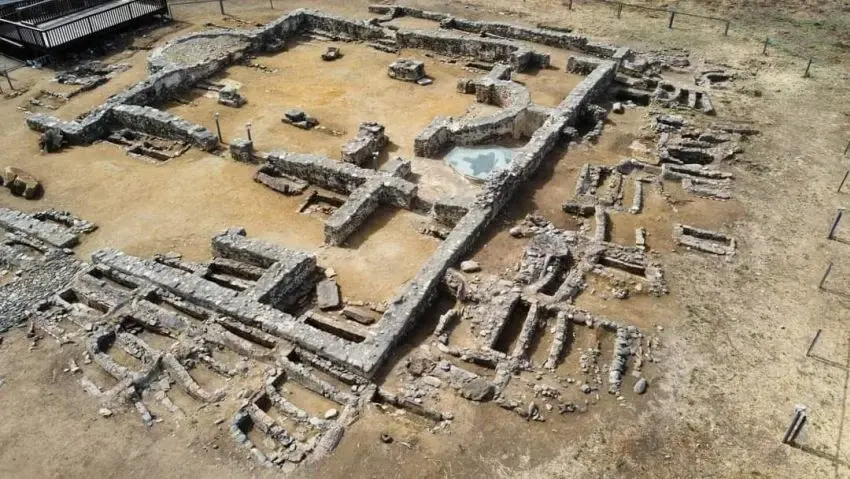
Unveil the Amazing Roman Ruins in Marbella
Teba Siles | · 8 min. read
Beneath Marbella's modern charm lies a rich historical heritage that spans thousands of years. Among its most captivating treasures are the Roman ruins in Marbella, offering a fascinating glimpse into the opulent lifestyle and architectural brilliance of the ancient Roman Empire.
From the intricate mosaics of the Roman Villa of Río Verde to the impressive engineering of the Roman Baths of Guadalmina, these sites stand as enduring symbols of the region's ancient past. Whether you're a history enthusiast, an architecture lover, or simply curious about Marbella's deep-rooted legacy, exploring these Roman ruins promises an unforgettable journey.
- Table of contents
- The Legacy of Roman History in Marbella
- Exploring Roman Ruins in Marbella: Three Roman Sites You Shouldn’t Miss
- Final Thoughts: Marbella’s Roman Heritage
The Legacy of Roman History in Marbella
Marbella's Roman heritage offers a fascinating glimpse into a time when the region was a thriving hub of culture, innovation, and luxury. The Roman influence is still evident in the remarkable ruins scattered across the area, which showcase the opulence and sophistication of its ancient inhabitants.
From the intricately designed mosaics of the Roman Villa of Río Verde, which depict the culinary delights enjoyed by Roman citizens, to the architectural brilliance of the Roman Baths of Guadalmina—similar to the famed baths of Carthage—each site highlights the ingenuity and high standard of living that defined Roman society. These baths, in particular, continue to capture the attention of archaeologists worldwide, further cementing Marbella’s historical significance.
In addition to these sites, the early Christian Basilica of Vega del Mar near Guadalmina offers a unique view of the transition from Roman traditions to early Christianity. This rare site, part of a larger complex that includes Roman tombs, a fish-salting factory, and aqueducts, paints a vivid picture of the region's evolving cultural landscape.
The Roman ruins in Marbella are more than just remnants of the past; they are enduring symbols of wealth, culture, and architectural brilliance. Whether you're exploring the mosaics of Río Verde, marveling at the design of the Guadalmina Baths, or walking through the early Christian basilica, Marbella’s Roman legacy is a testament to its role as a center of life, luxury, and innovation for centuries.
Exploring Roman Ruins in Marbella: Three Roman Sites You Shouldn’t Miss
Marbella’s Roman heritage is showcased through three remarkable archaeological sites that offer a fascinating window into the region's ancient past. These sites not only highlight the architectural brilliance of Roman civilization but also provide a glimpse into the daily lives, traditions, and ingenuity of its people.

The Roman Villa of Río Verde
Location: Calle Carlos Posac Mon, Urbanización Río Verde Playa (Marbella)
Visiting hours: Fridays, Saturdays, Sundays, and holidays from 10:30 AM to 1:30 PM.
The Roman Villa of Río Verde is located about 5 kilometers from Marbella, in the middle of the Golden Mile, on the left bank of the Río Verde. It can be reached via the National Road 340 towards Algeciras. Discovered by a British traveler in the eighteenth century, it was not excavated until the 1960s. Initially, it was believed to be the remains of the ancient Roman city of Salduba, but it was soon discovered to be a large independent Roman villa.
The finds place the Roman Villa of Río Verde in the first century AD, with ceramics, marbles, and metal objects found now housed in the Municipal Museum. The general interest in this site revolves around its mosaic flooring, composed of small cubic pieces in various colors called "tesserae."
To the right of the entrance is a square room with a floor decorated with mosaics, featuring the head of Medusa as the central theme, a symbol of good luck. The rest of the decoration includes alternating geometric elements, except in the patio, where there are various representations related to culinary arts, such as animals, stoves, fountains, roasters, soup tureens, and skewers, all in black and white colors.

The Roman Baths of Guadalmina
Location: Calle 3, Urbanización Guadalmina Baja (San Pedro Alcántara)
Guided tour hours: Thursdays, Fridays, Saturdays, Sundays, and holidays from 9:00 AM to 11:00 AM.
The Roman Baths of Guadalmina are a spectacular thermal building constructed in the 2nd century AD. It is a highly complex construction, both in architectural conception and functionality. Although it is unknown if it was the work of a significant figure or linked to an urban center, it is evident the ambition to achieve an original and surprising work, reflecting the power of the one who undertook the construction.
The Roman thermal complex has a central area surrounded by seven high-vaulted rooms. It has a very precise geometric floor plan, octagonal in shape, organized around a central open core with several niches acting as alcoves. Around this, in a radial manner, seven similarly shaped rooms are attached, leaving a trapezoidal area on the west side, possibly the entrance.
All rooms have high vaulted ceilings, and there is a higher level around the central room's oculus, which is thought to have been a castellum aquae where the now-missing aqueduct would have been connected. It is notable how well much of the building has withstood the test of time, thanks to the variety of construction methods used, especially the systematic use of concrete structures throughout the complex, and the use of arches, vaults, and domes as architectural solutions for openings and roofs.

The Early Christian Basilica of Vega del Mar
Location: Calle Eucaliptos, Urbanización Linda Vista Playa (San Pedro Alcántara)
Guided tour hours: Thursdays, Fridays, Saturdays, Sundays, and holidays from 11:15 AM to 2:00 PM.
With over 1,500 years of history, the early Christian Basilica is one of the most brilliant archaeological manifestations of early Christianity. Dating back to the 5th century AD, this complex consists of a basilica building with a double apse and a necropolis. It features a baptismal font designed for immersion baptism.
The building has a rectangular floor plan, slightly oriented northwest southeast. It consists of a central body with three naves separated by pillars, with the most dominant feature being the existence of two opposing apses, serving as altar and martyrdom, a characteristic that makes it unique with few parallels in the Iberian Peninsula. Next to the westernmost apse is the baptistery, housing several baptismal fonts, including one that combines the Greek cross and fish shapes, designed for the immersion baptism rite.
The associated necropolis has around two hundred excavated burials, dating from the 3rd to the 7th century AD.
Why Visit the Roman Ruins in Marbella?
The Roman ruins in Marbella offer more than just a glimpse into ancient history—they invite us to reflect on the importance of preserving our cultural heritage. These historical sites are tangible connections to the past, allowing us to walk in the footsteps of those who lived and thrived here centuries ago.
For history enthusiasts, architecture lovers, and cultural tourists alike, Marbella presents an opportunity to witness the grandeur of Roman civilization firsthand. The intricate mosaics, engineering marvels, and early Christian sites serve as a testament to the region's rich cultural evolution.
But Marbella isn’t just about ancient history. It’s a destination where the past and present coexist seamlessly. While you immerse yourself in the Roman ruins, you'll also find modern amenities, luxury living, and a vibrant lifestyle that make Marbella one of the most desirable places to visit and live.
If you're fascinated by Marbella's Roman past, you’ll find even more historical treasures to explore throughout the area. From ancient landmarks to hidden gems, Marbella is rich in history that spans centuries. For more on the city’s historical attractions, check out our guide to the must-see sites in the region.
Discover How Marbella’s Roman Heritage Enhances Its Real Estate Appeal
Marbella’s Roman ruins not only provide a captivating historical backdrop but also add to the area’s allure as a prime real estate destination. The region’s deep-rooted cultural history enriches the experience of living here, making it a unique blend of ancient charm and modern luxury. So, if you're considering a vacation home, a luxury villa, or an investment property, Marbella’s rich heritage and breathtaking landscapes create an unparalleled environment if you're seeking a place where history meets contemporary living.
Final Thoughts: Marbella’s Roman Heritage
Marbella’s Roman ruins provide an enchanting glimpse into the past, offering a fascinating connection to the region's rich history and cultural evolution. These ancient sites stand as timeless reminders of a thriving civilization that once flourished on the Costa del Sol.
Key Takeaways:
- The Roman Villa of Río Verde features exquisite mosaics that offer a rare look into Roman daily life, showcasing art and culinary traditions.
- The Roman Baths of Guadalmina are a stunning example of Roman engineering, reflecting the empire’s architectural brilliance and focus on luxury and well-being.
- The early Christian Basilica of Vega del Mar serves as a unique site marking the transition from Roman culture to early Christianity in the region.
Marbella is more than just its Roman ruins; it beautifully blends ancient heritage with modern luxury, making it a must-visit destination for those seeking a rich cultural experience alongside contemporary comfort.